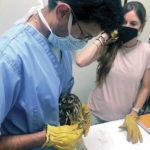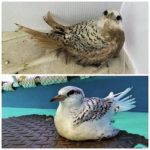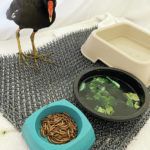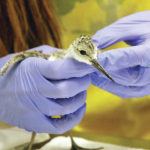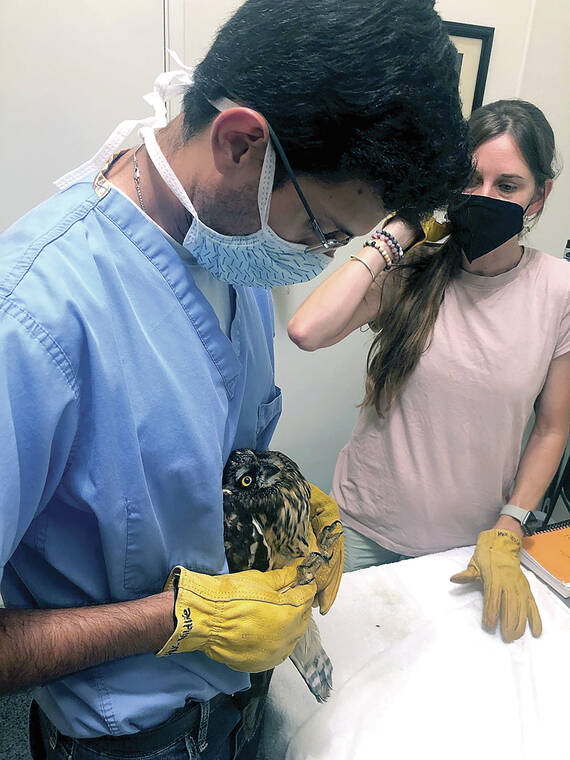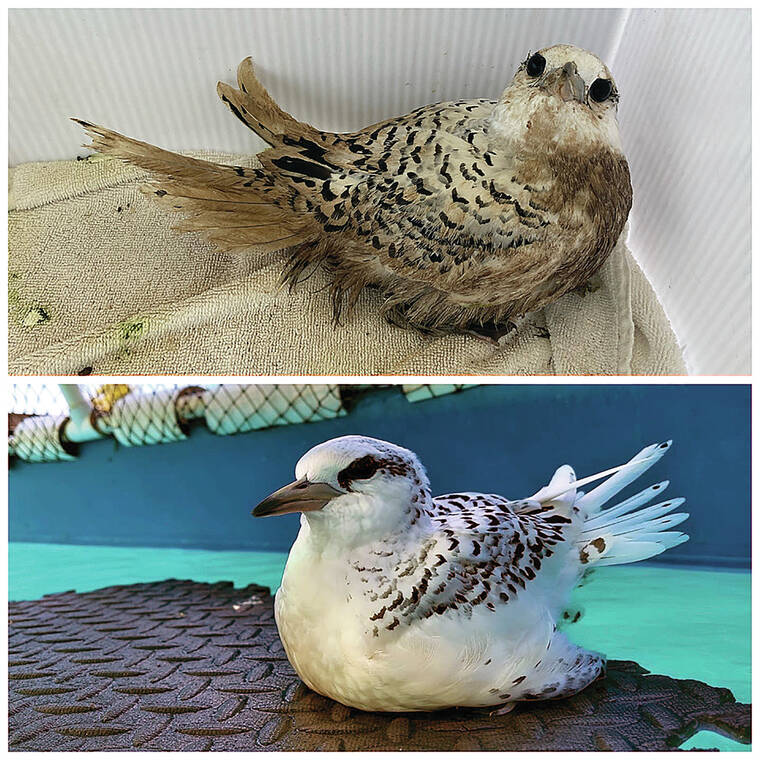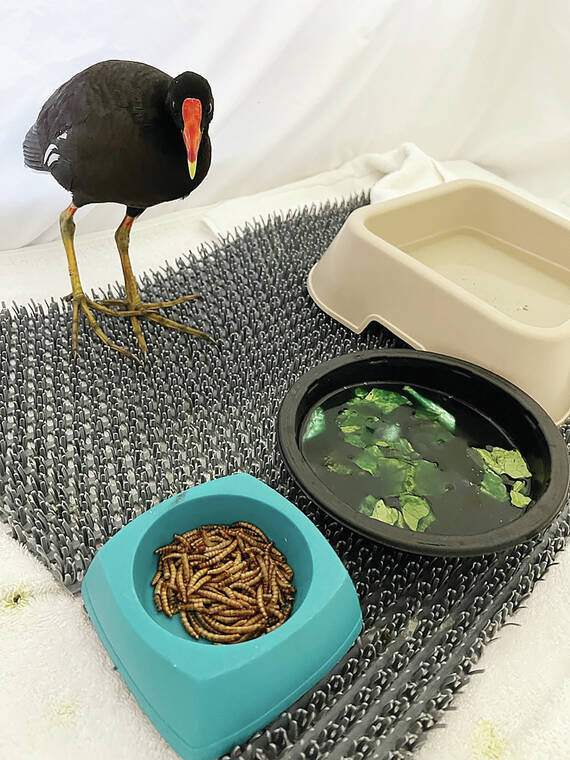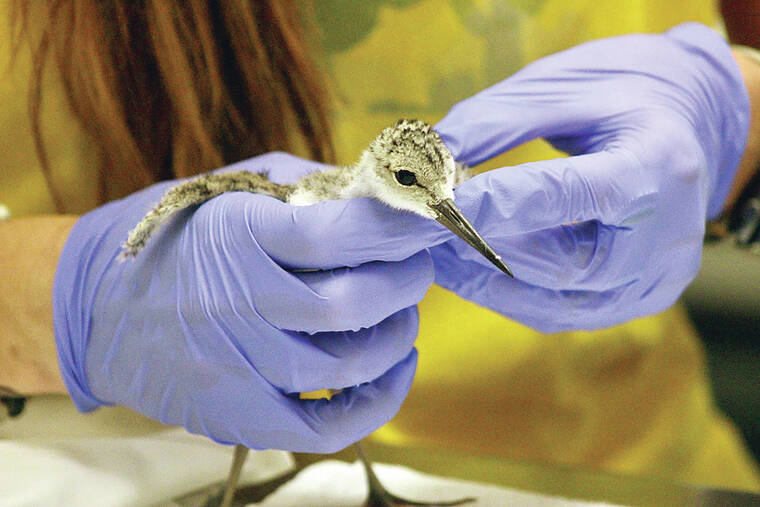Kapaau-based Hawaii Wildlife Center is celebrating 10 years of providing emergency response, medical and rehabilitative care for Hawaii’s native birds and bats.
Currently, there are 30 patients in the center’s hospital, just the latest of on the list of 2,695 patients since the opening of the North Kohala facility in 2012, and satellite programs on Oahu and Lanai, according to Rae Okawa, the center’s coordinator. Around 150 different bird and bat species have been seen at the hospital, including 27 rare species.
The Hawaii Wildlife Center, in addition to saving avian lives, does contingency planning, emergency response, training and research assistance across the state with care provided to birds and bats as far north as Kure Atoll. The nonprofit operates with six full-time staff and a part-time worker, and also hosts the Ho‘opulama Science and Discovery Center, an interactive space highlighting native wildlife rehabilitation, conservation, biology, and wildlife medicine.
“We’re a statewide-run program and one of the two organizations permitted to accept all species of native birds,” said Okawa. “A lot of the birds we see are endangered, but it’s a mix. As long as it’s native to Hawaii we’ll take it.”
On the Big Island, current issues facing native birds include getting hit by cars; colliding with structures; getting hit by golf balls — usually causing serious fractures to wings and/or legs along with neurological issues; gunshots, rodenticide poisoning, predator attacks from domestic animals and pollution.
And, Okawa noted, an individual is most likely to find an injured bird in areas the species are known to frequent, which can vary by season.
“During the winter months, for example, sea birds will be around anything brightly lit, including parking lots, buildings and cruise ships. For nene (Hawaiian goose), they love the golf courses and there’s usually a lot of people around to help. So they’re found pretty quickly,” Okawa said.
How can someone help an injured native bird, such as the ‘io (Hawaiian hawk) or apapane (Hawaiian honeycreeper) or even an ‘Ope‘ape‘a (hoary bat) if they come across an injured specimen?
“One of the most critical factors in maximizing the odds of a successful recovery is how quickly the injured animal is able to be responded to and brought to our center for treatment. The faster injured animals are brought to our facility, the more quickly they can receive the medical care they need to heal and get back to the wild,” Okawa said. “Anyone who comes across an injured native bird or bat is encouraged to call us right away. Our staff can also help ID the bird and guide the caller through the rescue process.”
The center can be reached by dialing (808) 884-5000.
On trying to pick up an injured animal, such as moving it from the roadway to prevent further injury or death, the Hawaii Wildlife Center recommends being cautious, because the animals could strike.
“They have sharp claws and pointy beaks, and even though they look injured it could be a self defense mechanism and they could strike,” Okawa said. “If someone isn’t comfortable picking them up we encourage them to call us. Or wrap the bird in a shirt or clothing item.”
Once in the hospital, depending on the injury, birds can be seen for 24 to 48 hours, or, for weeks or months.
For sea birds, they’re usually dehydrated, according to the center.
“For broken wings and neurological issues there in for weeks and months. We need to do physical therapy. We need to make sure they’re ready for the water,” the center said.
For Okawa, being aware of the issues is the first step toward helping endangered birds and bats.
“Being aware of these issues and helping to spread awareness within the community helps a lot,” she said.
Those who would like to go a step further can get involved directly with the center in a variety of ways.
Donations can be made to the nonprofit, which receives no federal or state funding for operations, or people can volunteer their time at the facility and grounds. Those who’ve got the time and a car — or even a plane — can participate in the center’s Wheels for Wildlife and Wings for Wildlife programs, each of which is a growing ohana of dedicated volunteers who help transport patients to and from the facility.
For more information, including a list of native species and how to get help for a downed bird or bat, visit hawaiiwildlifecenter.org. To get involved or ask questions, contact the center at info@hawaiiwildlifecenter.org or call (808) 884-5000.
